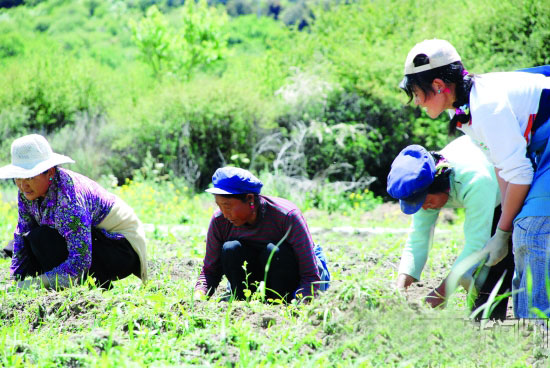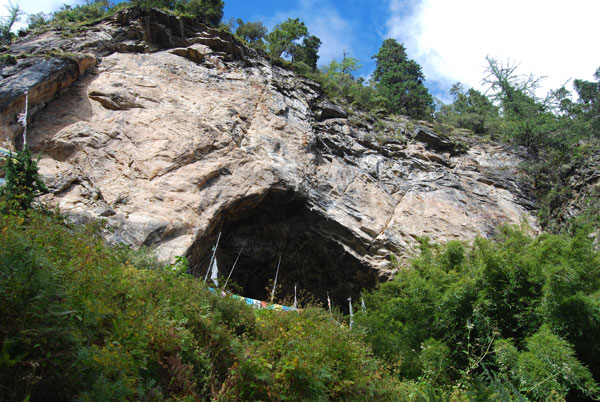Tibetan herbs enrich local people
 |
|
File photo shows that workers plant Tibetan herbs in the breeding center of Mainling county, Nyingchi prefecture of southeast Tibet autonomous region. [Photo/chinatibetnews.com] |
Apart from improving local residents' income, the planting of Tibetan herbs also protects the precious wild Tibetan herb resources. Due to the special climate, geographical conditions and fragile ecological environment in Nyingchi Prefecture, and the long regeneration cycle of the wild Tibetan medicinal herbs, unordered picking may cause the scarcity of them.
"In order to guarantee the seeds for local people, every year technicians of the center will spend several months picking seeds of various Tibetan herbs after their traveling all over the townships and mountains of the county," said Pedma Yeshe.
"The intensive planting of Tibetan herbs also prevents the unordered picking behaviors. Now the number of some originally rare herbs, such as wild Gentiana, has been increased year by year," said him.
With the name meaning "the producing place of herbs" in Tibetan, the semi-moist monsoon climate of Mainling County provides well growing environment for Tibetan herbs, such as Pleurospermum uralense, saffron, angelica and snow lotus.
According to historical records, it is in Mainling County that Yuthok Yonten Gonpo, the first ancestor of Tibetan medicine, set up his school "Dew Cave" to give lectures and teach his disciples. The master trained a mass of Tibetan medicine doctors and wrote the "Four Medical Tantras", the foundation work of Tibetan medicine, making the county "the birthplace of the two thousand years old Tibetan medicine".
 |
|
File photo shows the "Dew Cave" where Yuthok Yonten Gonpo gave lectures and taught his disciples in the mountains of Mainling county, Nyingchi prefecture of southeast Tibet autonomous region. |
















